More Forgotten Realms goodness:
The Chosen One is essentially a ghoul who causes temporary Constitution damage instead of paralysis. It doesn’t say why it is named that way, and only that chosen ones are made by the Red Wizards of Thay as servants. Very weak entry. (Variant Ghoul +1)
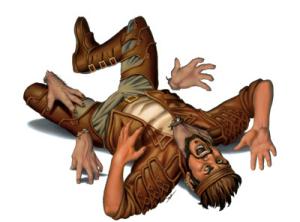
Crawling Claws, on the other hand, are awesome. They also are the other hand, as they are created only from left hands taken from dead or even living humanoids. They don’t have any special abilities or fancyful backstory. They are just animated hands that crawl around and attack people, which is cool and fun enough by itself. Creating one is only a 3rd level spell and each claw is automatically under the command of its creator. For some reason the spell is also evil, even though nothing about it indicates why. Ah well, alignment! Never made any sense, never will.
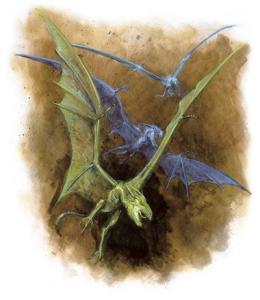
I am not sure where the idea of monsters being the creation of crazy wizards comes from, but it might very well have been Forgotten Realms. Darkenbeasts are somewhat reptilian and bat like monsters created from ordinary small animals by the Red Wizards. As their name hints at, darkenbeasts can not tollerate sunlight and after each ten minutes of exposure there is a 25% chance that the magic will end and the monster return back into an animal. In addition to being winged servants with a high resistance to magic, a wizard can also use a darkenbeast to store a spell for later. When the darkenbeast is near its master, he can retrieve the spell and aim it at whatever target he pleases, which destroyes the darkenbeast in the process. I think these are cooler than winged monkeys.
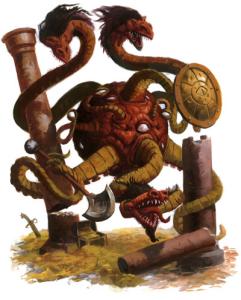
The Deepspawn had the potential to be one of the truly iconic weird monsters of Dungeons & Dragons, but somehow it remained limited to Forgotten Realms and didn’t really make any appearance after 2nd edtition. It’s on the cover of Lost Empires of Faerûn, but I think that’s it. When I first got into D&D with the Forgotten Realms campaign setting box (the 3rd edition FRCS had not been released yet), I thought that this creature was the fourth member of the exclusive group of aboleths, beholders, and illithids. But no it’s not, which is a shame. The deepspawn is a monster with a large spherical body over 5 meters in diameter and has six long tentacles. Three of the tentacles are used as arms, while the other three end in large maws full of sharp teeth. Its eyes are all over the body. The deepspawn by itself is not a terribly dangerous fighter and has only little magic abilities that would make any difference in a fight, but is completely immune to any poison and has a high resistance to magic. Its main ability is to spawn copies of any kind of living creature it has eaten, which takes between 1 and 4 day for each spawn. As a result, a deepspawn is never encountered alone but always surrounded and protected by a considerable force of other monsters it created. While the spawning ability is a bit dubious to me, I really do like its appearance and the idea that something like that would be the mastermind of a dungeon that rules over all the lesser monsters. The deepspawn got updated in Lost Empires of Faerûn, since the stats here are pretty shoddy. Size got increased from Large to Huge (which for a 5 meter sphere with long tentacles seems more correct), Strength got increased from measly 19 to 29 and Charisma bumped up from 4 to 10, which makes much more sense for something with Intelligence and Wisdom of 17. Now that looks a lot meaner, like something of this appearance should.
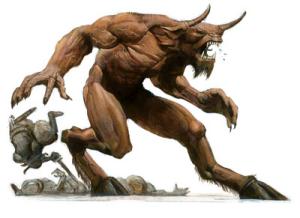
As demons go, the Ghour doesn’t seem particularly exciting or noteworthy. It’s a big creature that looks like an oversized hybrid of a minotaur and an ogre and has all the abilities of regular D&D demons. But it’s its description and context that make it shine. Ghours are most commonly found as servants of the demon lord Baphomet, who is mostly worshipped by ogres, giants, minotaurs, and the like. What makes them interesting is that these demons are not presented as monsters to be encountered on journeys into the Abyss, but instead frequently come to the material plane where they gather small armies of worshippers of their master. Fighting a gang of ogres and minotaurs is already a pretty cool setup for a mid-level range adventure, but when it turns out that they are actually led by one of these guys, I think it immediately becomes a few steps cooler. Ghours can be pretty intelligent, much more so than their average minions and even many heroes who fight them. Like most demons and devils, they also have a couple of magic powers, though in the case of a ghour, they are not too impressive. But still, casting blasphemy and teleporting around as many times as they want could really ruin peoples day.
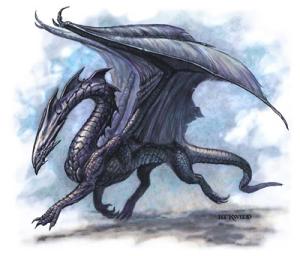
As Dungeons & Dragons is concerned, you can never have enough dragons. In addition to the ten standard variants, there are also several ones native to the Forgotten Realms, five of which are in this book. The Deep Dragon is one of the more interesting ones. I admit, I am very easily impressed by a good picture, and this Todd Lockwood illustration is awesome. Going with Wayne Reynolds as the main artist is one of the main things that makes 3.5e feel so noticably different from early 3rd edition. Deep dragons are cool. As the name implies, these dragons are native to the Underdark. While their wings imply that they were originally from the surface, their bodies are highly adapted to living in caves, being much more slender and thinner than most types of dragons. They are also of relatively small size, similar to black and white dragons. They are also natural shapechanger, which usually is found only in good dragons and not the evil ones. From a very young age they can turn into a snake, which allows them to navigate even very small passages, and a few years later they also develop the ability to take on the shape of any type of humanoid they wish. They are also very intelligent, even for dragons, which makes them very well suited for infiltrating any underground cities. If they make alliances with any of the Underdark races, it’s usually with the drow, as the two creatures have the most in common.
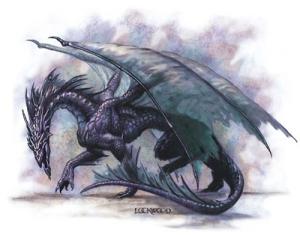
Shadow Dragons are a very unusual type of dragons and have some kind of very strong connection to the Shadow Plane. They are usually found in the Underdark and then commonly in the very most deepest region, far below the depths adventurers from the surface usually get to reach. They have a high degree of control over the darkness, allowing them to completely block all light around them or making themselves virtually invisible. Their breath weapon is particularly nasty and forces any creatures hit by it to make a rather tough saving throw or have several character levels drained. Fighting a an older shadow dragon without a death ward spell on everyone would be extremely difficult.
One of the other forms of dragons in the book is the Song Dragon, which you really could also just call a Harper Dragon. Because that’s what it is. It’s super charismatic, can transform into a beautiful human female, speaks every language, and is virtually impossible to detect as a dragon when in human form. And of course, they are completely devoted to helping people, protecting the land, and fighting evil, while hiding their true dragon nature. Don’t use Dragon Sue in your game, there is no way to do it in a way that won’t piss of your players. Fortunately people realized that and I am not aware of song dragons appearing anywhere outside this book.
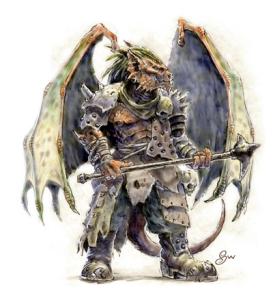
There isn’t much description about the Dragonkin, at least in this books, and they don’t really have any special ability other than flying. Many of them are allied with the Cult of the Dragon, an organization I believe was pretty important in 2nd edition, but never made any appearance in 3rd, as far as I am aware. The most interesting thing about them is that they very much strike me as proto-dragonborn, which became one of the player character races in 4th edition.
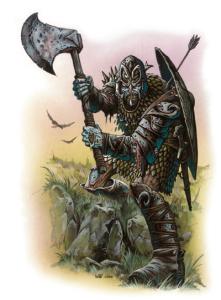
The Dread Warrior is a better kind of zombie, created by the Red Wizards of Thay. (Who else?) They are raised from fallen soldiers and retain some of their mind and abilities, making them more like ghouls. Not terribly creative, but ghouls with weapons and armor and some kind of military organization are pretty cool, I think. (Variant Ghoul +1)
